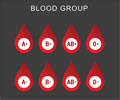
Beginning June 2010, all patients admitted to a 2,300 bed academic medical center had VTE risk addressed in their electronic admission orders. Risk assessment and prophylaxis were monitored using Microsoft AMALGA software and hospital electronic health record (ECLIPSYS). VTE rates were monitored through chart review by certified coders. Rates were calculated as VTE per 1,000 patient discharges and rates were compared with chi-square. AMALGA software allowed real-time assessment of all patients risk scores and prophylaxis regimens. The number of discharges from the institution is approximately 62,000 per year.
Compared to the first half of 2010 VTE decreased significantly after implementation of the program. Compliance with prophylaxis also doubled after implementation. Thirty-two percent of patients deemed low-risk by admitting physician were actually high risk. Of these, 65 percent were already on appropriate prophylaxis.
Researchers noted that before the program was implemented the hospital the rate of VTE per 1,000 discharges was 5.. Post-implementation, the rate of VTE had dropped to 4.22 per 1,000 discharges. The rate of appropriate DVT prophylaxis was significantly increased after implementation of the program.
"A hospital-wide VTE prevention program that evaluates all admitted patients is feasible even in large medical centers," added Dr. Morrissey. "Our preliminary data suggest that there is a significant decrease in VTE events and significant improvement in prophylaxis rates. The AMALGA software allows real-time monitoring of risk and prophylaxis resulting in the ability to correct errors and provide appropriate prophylaxis when indicated."
About the Society for Vascular Surgery
The Society for Vascular Surgery® (SVS) is a not-for-profit professional medical society, composed primarily of vascular surgeons, that seeks to advance excellence and innovation in vascular health through education, advocacy, research, and public awareness. SVS is the national advocate for 3,350 specialty-trained vascular surgeons and other medical professionals who are dedicated to the prevention and cure of vascular disease. Visit its Web site at www.VascularWeb.org® and follow SVS on Twitter by searching for VascularHealth or at http://twitter.com/VascularHealth.
Advertisement








